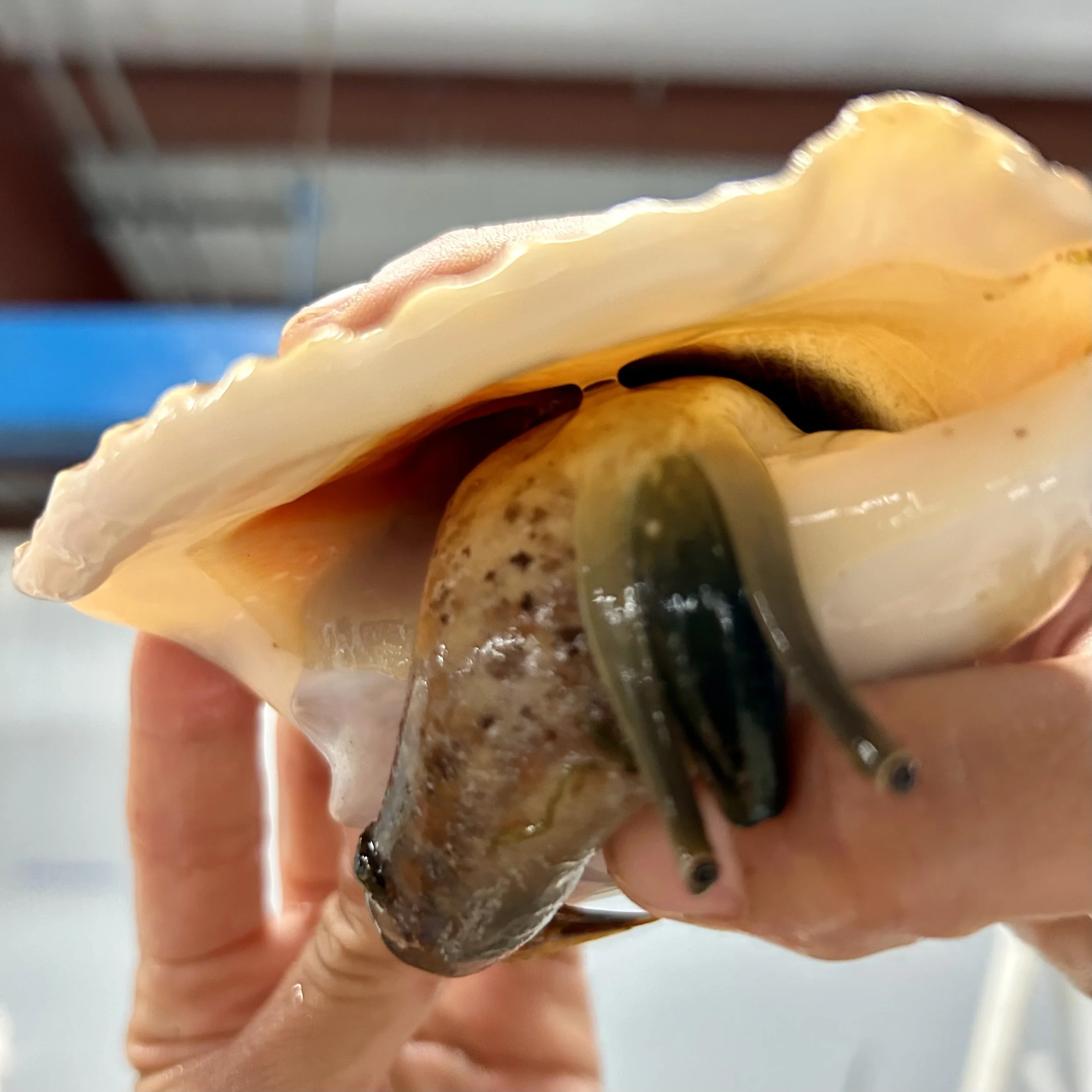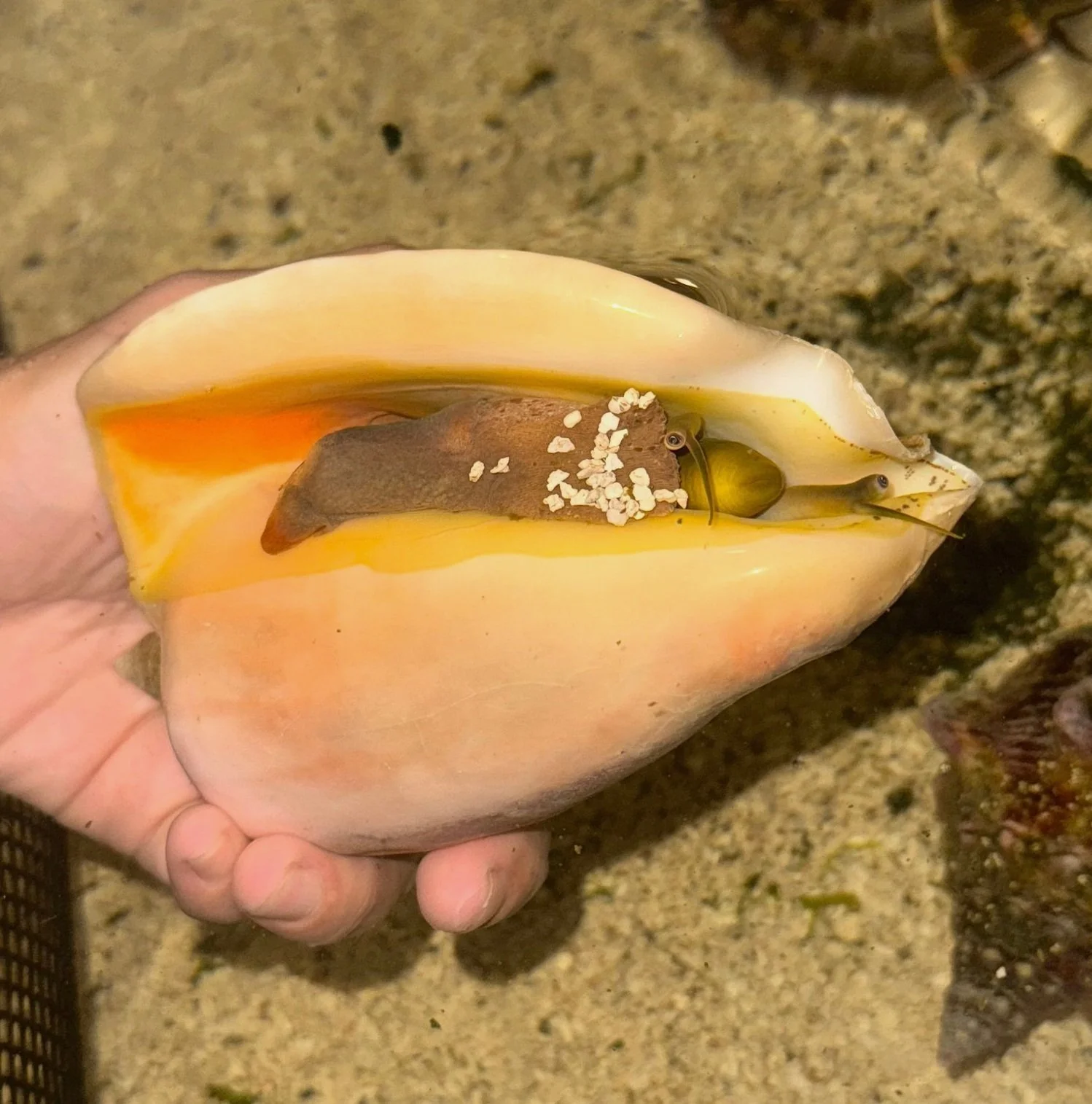Getting to Know the Queen Conch
The queen conch is a large gastropod (snail) in phylum Mollusca. Queen conch are slow growing and late to mature, reaching up to 12 inches in length and living up to 30 years. The queen conch occurs throughout the Caribbean Sea, the Gulf of Mexico, Florida, and around Bermuda. They are benthic-grazing herbivores that feed on diatoms, seagrass detritus, and various types of algae and epiphytes. Adult queen conch prefer sandy algal flats, but are also found on gravel, coral rubble, smooth hard coral, and beach rock bottom, while juveniles are primarily associated with seagrass beds.
Queen conch are highly sought after for their meat and are one of the most valuable fishery species in the Caribbean.
In 2024, NOAA Fisheries listed the queen conch as threatened under the Endangered Species Act. In 1992, the species was listed on Appendix II of the Convention of International Trade of Endangered Species (CITES). This means that the conch may be threatened with extinction if harvesting and trade is not sustainably managed.
INside the shell
Queen conch are mature adults at 4-5 years old. An adult conch is fully grown when it has a well-formed flared lip on its shell. This means the conch has had a chance to reproduce and replace the conch that are harvested in the fishery. Through grazing, queen conch play an important role in keeping their habitat (seagrass beds) clean and healthy.
Dive deeper on our Resources page or take eConch: Online Learning for Growing Queen Conch.
Meet our Florida Milk Conch
Meet our milk conch (Macrostrombus costatus) located at FAU Harbor Branch Oceanographic Institute.
Why milk conch? Milk conch are similar to queen conch, and in Florida, we work with these individuals daily to develop methods for producing egg masses. Our goal is to transfer this technology to the breeding of queen conch for restoration in our Mobile Labs and Stationary Hatcheries.
This project is supported by Builders Initiative.


















